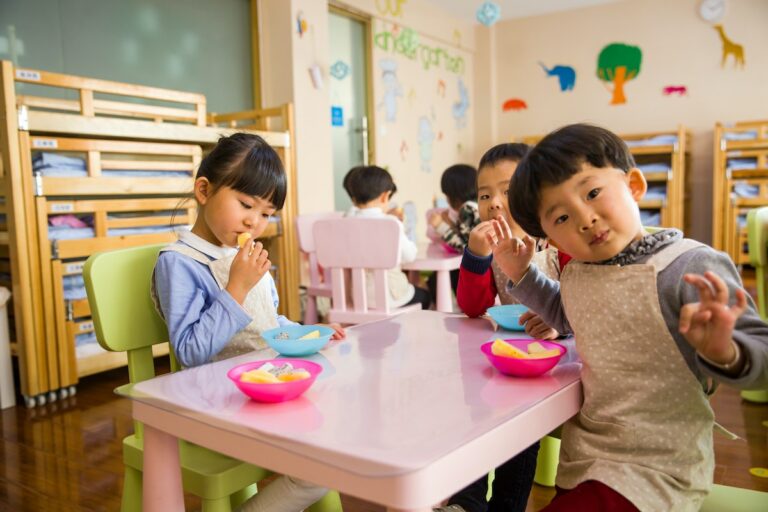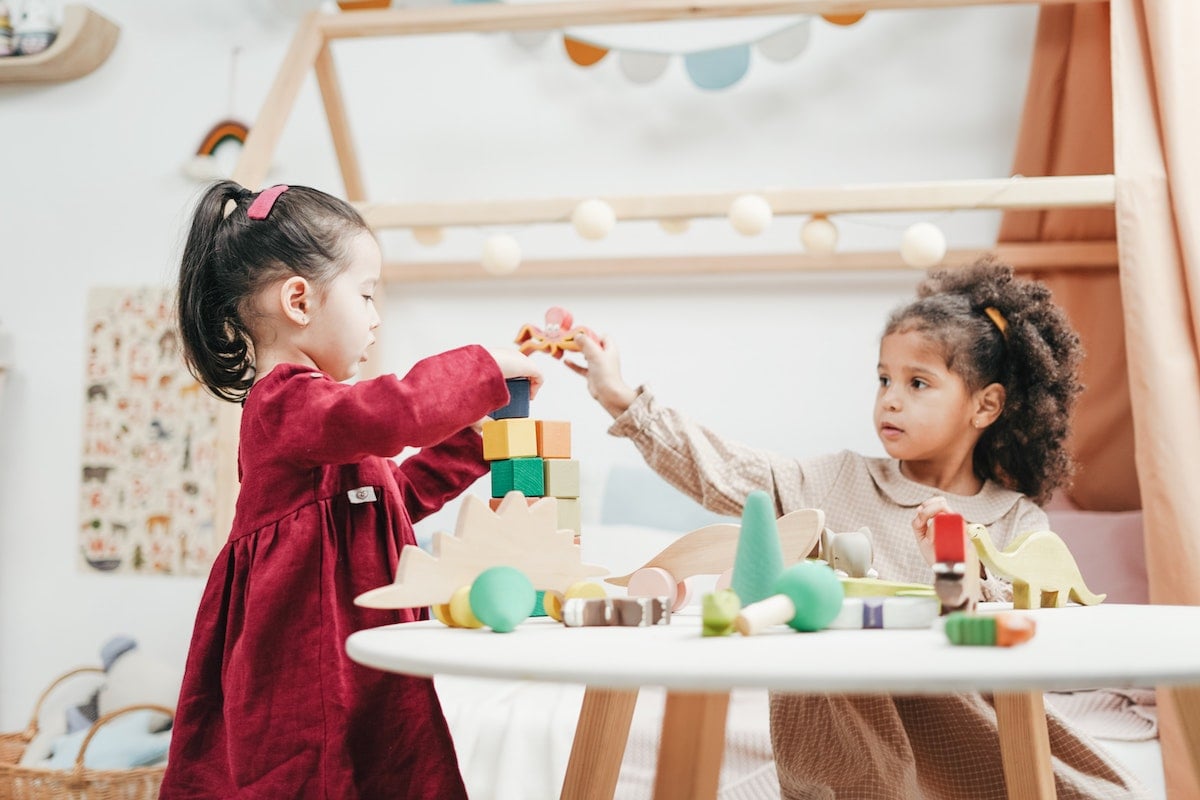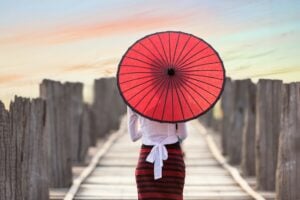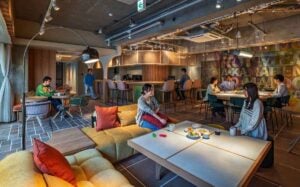
Planning to enroll your child in daycare or kindergarten in Japan? In this article, we’ve compiled everything you need to know, from choosing the right facility for your child to submitting an application.
It can be confusing to understand the different childcare systems you’ll find in Japan. Each has its own application process, which is why we’ve organized them here so you can get the answers you’re looking for quickly.
In this article, we’ll cover:
- Types of daycare in Japan
- How to apply for daycare
- How much daycare costs in Japan
- How long it takes to get into daycare
Let’s get started.
Types of daycare in Japan
- Daycare: Public, Private, and Temporary
- Kindergarten
- Daycare-Kindergarten Hybrids: Kodomo-en Facilities
- Other options
Daycare
Daycare is designed for busy parents who need someone to watch their children during the day. If both parents aren’t working, you will usually not be accepted into public daycare. You can also apply for daycare if one parent is busy for another reason, like taking care of an elderly parent, for example.
While some daycares have events and a curriculum for the children, others are simply focused on caring for the children and letting them play. (We opted for a play-focused daycare for our toddlers.)
If you want to put your child in a more learning-focused environment, you might want to consider kindergarten from age 3.
Daycare can be divided into 3 types: public, private, and temporary.
Public Daycare
Public daycares are known as “authorized daycare centers” or 認可保育園. These daycares operate under guidelines set forth by the Japanese government, and in return, the government gives them extra benefits.
To apply to a public daycare, you need to submit an application with your local municipal government. You’ll also make payments to the government, who will pay the daycare on your behalf.
One thing to note about public daycare is that spots are given according to priority and space available. When you apply for public daycare, you make a list of your top choices, but it’s not guaranteed that you will get into your top choice.
Public daycare is usually the most affordable option because it’s subsidized by the government. The price you pay depends on many factors, which we’ll explore in more detail below.
Daycare is usually available from age 0 to 6 until the child enters primary school.
Private Daycare
Private daycares operate independently, which means they set their own rules and have their own application processes. These are called “unauthorized private daycares,” or 認可外保育園 in Japanese. That doesn’t mean they’re unsafe; it just means they’re not affiliated with the government. You’ll need to visit the daycare directly to see what it’s like and decide if it’s a good fit for your family.
Temporary Daycare
Some daycare facilities, both public and private, offer the option to sign up for temporary daycare or 一時預かり. With temporary daycare, you can sign up your child to go in on specific days as you need them. Your child won’t be officially enrolled at the facility, but you can still get a little bit of childcare as you need.
From what I’ve seen, most daycares provide temporary care from 1 to 3 days a week as needed, but it’s not guaranteed that they’ll have openings every day.
This is a great option for parents who don’t work full time but still need care, or stay-at-home moms who want a little break from childcare (I’ve been there!).
Kindergarten
Kindergartens, or “youchien” 幼稚園 in Japanese, are similar to daycare but are more focused on guided learning and activities to help the child prepare for school.
Some kindergartens teach school subjects like English, Japanese, and math, but others focus more on social skills, independence, and physical activity.
Many kindergartens also have school buses that will pick up your child and take them to school, which can be very handy.
The downside of kindergarten is that the school day lasts until mid-afternoon. If you want your child to stay longer, you’ll need to pay extra (this may differ depending on the school). You also might need to make your child’s lunch each day.
Kindergarten is available from age 3 until the child enters school, and the school year starts in April.
Daycare-Kindergarten Hybrid: Kodomo-en
Kodomo-en, also called “certified kodomo-en” or 認定こども園, is a new type of childcare facility that was started in the early 2000s to better provide for parents’ needs. It provides the learning-focused environment of a kindergarten with the longer hours of a daycare facility.
Kodomo-en facilities are authorized by the government, which means they operate similarly to public daycares. You’ll need to apply through your local municipal office.
A plus side of a kodomo-en facility is that a child aged 3 or older can continue to stay in the same facility even if both parents aren’t working. In that case, they’ll apply for the kindergarten side of the facility.
If you’re looking for childcare on top of the kindergarten experience, or if your child isn’t 3 yet, you’ll need to prove that your family needs childcare in order to be accepted into kodomo-en.
Other types of care
There are other types of care available if you decide not to or are unable to enroll your child in daycare or kindergarten. This may depend on your local municipality.
In my area, we have short-stay childcare (ショートステイ)that can take your child overnight for as many days as you need for emergencies, sickness, sudden business trips, or other reasons. There’s something called “Twilight Stay” (トワイライトステイ) that will take a child overnight. And there’s an organization of retired people over 60 who can come and help you with your child at home if you need support.
Some pediatric hospitals also provide sick child care or 病児保育 if your child is sick, injured, or recovering from illness and needs care.
I’ve found that there’s plenty of government support available for parents, including places you can go to talk through your fears and get support for postpartum depression and anxiety.
To find out what your local area has available, visit the Childcare Support section 子育て支援課 of your local municipal office and ask for more information.

How to apply for daycare in Japan
We’ll break down the application process for each type of daycare.
Applying for public daycare
You can apply for public daycare at any time, but it’s best to apply for the start of a new school year, since your child has a greater chance of getting accepted.
The school year begins in April, but applications are due between October and December of the previous year. You get notified in January or February if you’re accepted, and then you prepare to enroll from April.
When applying to public daycare, you’re not able to apply to the daycare directly. Instead, you submit a list of top choices to your local municipal office, and they choose which one your child gets placed in.
For that reason, you want to make sure you’ve visited all of the daycare facilities you’re interested in well before the application deadline.
There’s a second application period at the beginning of the year for families who missed the original application. (My husband and I applied during this period.) You’ll also submit proof of employment, your work hours, or other reasons you need childcare.
After reviewing your application, the government will award you a number of “points” based on your need for childcare.
You get more points if each parent is working full time, if your parents live far away and can’t help with your kids, and other factors.
The more points you get, the higher up you’ll be on the list to get placed.
If you miss the big application periods, you can also send in an application anytime throughout the year to be considered for the next month. Each month, the government will check for openings and will alert you if your child is chosen for an open spot.
It’s easier to apply for a newborn, since the class is completely open. After that, most children will continue to move up in the same daycare, so the number of open spots will be fewer. That said, you can still get placed if a family moves or changes to a different daycare.
If you have multiple kids, you can specify whether you want your kids to be placed in the same daycare or if they can be placed in different facilities. (We opted to put my 2 kids in the same daycare.)
To apply, visit the Childcare Support section of your local municipal office and ask for an application.
How to apply for private daycare in Japan
Private daycares operate independently, which means they have their own application procedures. You’ll need to approach them directly and ask them how and when to apply. You’ll fill out an application directly with them, and they’ll decide when your child can enter.
How to apply for temporary daycare in Japan
Temporary daycare is only available at specific daycares that have opted to provide the service. To apply, you’ll need to call the daycare directly and ask them for more details.
How to apply for kindergarten in Japan
Children can enter kindergarten from April after they turn 3. But the application process starts long before that.
Since application procedures differ between kindergartens, it’s important to visit each one and get the right documents before the application process begins.
It’s recommended to start visiting kindergartens during the summer before you intend to enroll your child. Most kindergartens have information sessions or 説明会 during early fall, and applications are often due in November. There is usually an interview with the child and other procedures to complete before the application is considered.
It can be a lot of work to apply for a kindergarten, so it’s best to start early if you’re interested in this option.
You can get a list of kindergartens in your area from your local municipal office’s Childcare Support section.
How to apply for kodomo-en
Kodomo-en facilities operate similarly to public daycares, which means you’ll need to apply to your local municipal government to be accepted. For more details, visit the Childcare Support section of your local municipal office.
How to apply for other childcare services
There are many other emergency and temporary childcare services available if you don’t enroll in daycare. Each one has its own application requirements and procedures. Visit the Childcare Support section of your local municipal office to get more information about these options.
How much does daycare in Japan cost?
According to government statistics, the cost of enrolling an average 2-year-old in public daycare is about ¥37,000 ($253 USD) per month.
Public daycare costs
Public daycare costs depend on a number of factors:
- Where you live.
- Your household income from the previous year.
- How many kids you have. You can get subsidies for multiple children.
- How many hours you’ll put your kids into daycare.
- The age of your kids. Children age 3 and up can go to public daycares and kindergartens for free, or attend private daycares for a reduced cost.
You’ll need to visit your local municipal office or browse its website to calculate how much you might pay for your family.
Private daycare costs
Each private daycare determines its own cost, so you’ll need to contact the daycare directly for more details.
One private daycare I found online charged roughly 50,000 yen ($337 USD) per month for one child, 8 hours a day, 5 days a week. Children 3 years and older cost roughly ¥30,000 ($202 USD) per month.
Kindergarten costs
Kindergarten costs also vary widely, depending on the facility. Private kindergartens are usually twice the price of public kindergartens (or more).
Here are the fees from one public kindergarten I found online:
- Entrance fee: ¥8000
- Clothing and items: ~¥20,000
- Monthly fees, including:
- Childcare fee: ¥12,000
- Lunch if applicable
- Small fees for books and activities
And here are the fees from a private kindergarten in my area:
- Entrance fee: ¥85,000
- Clothing and items: ~¥45,000
- School supplies: ~¥6000
- Books: ~¥4000
- Monthly fees, including:
- Childcare fee: ¥24,000
- Learning materials: ¥1260
- Facility maintenance fee: ¥2000
- Event fees: ¥500
- Lunch: ¥5400
- Bus fare: ¥3675
How long does it take to get into daycare?
Daycares in Japan are in high demand, and it can sometimes take a long time to get your child in one. It could take a couple of months (or longer) if you’re lower on the priority list, if you’re applying outside of the traditional application season, or if you’re applying for multiple kids.
In my case, we started searching for a daycare in June and got placed in August.
Putting your child into daycare in Japan is a big step, and it comes with a lot of choices. I hope this article has helped you make sense of all of the different options you have so you can enroll your child in the right childcare facility for him or her.
Author: Amanda Horiuchi




















